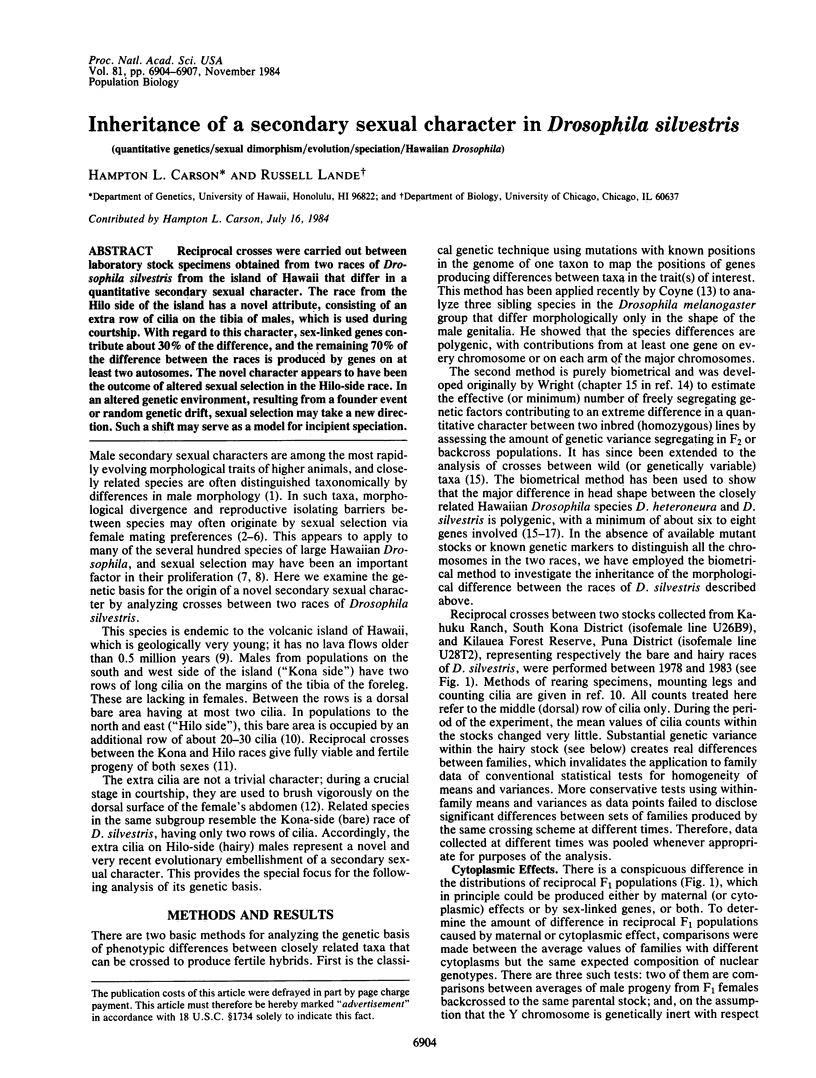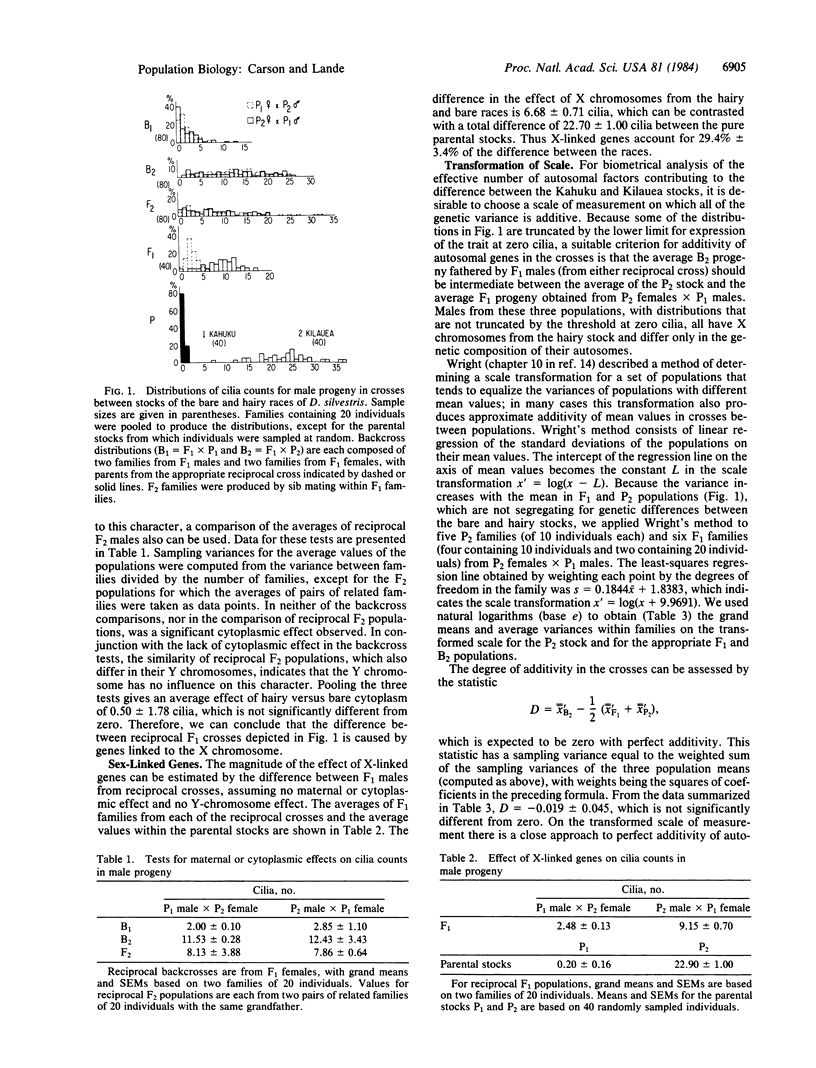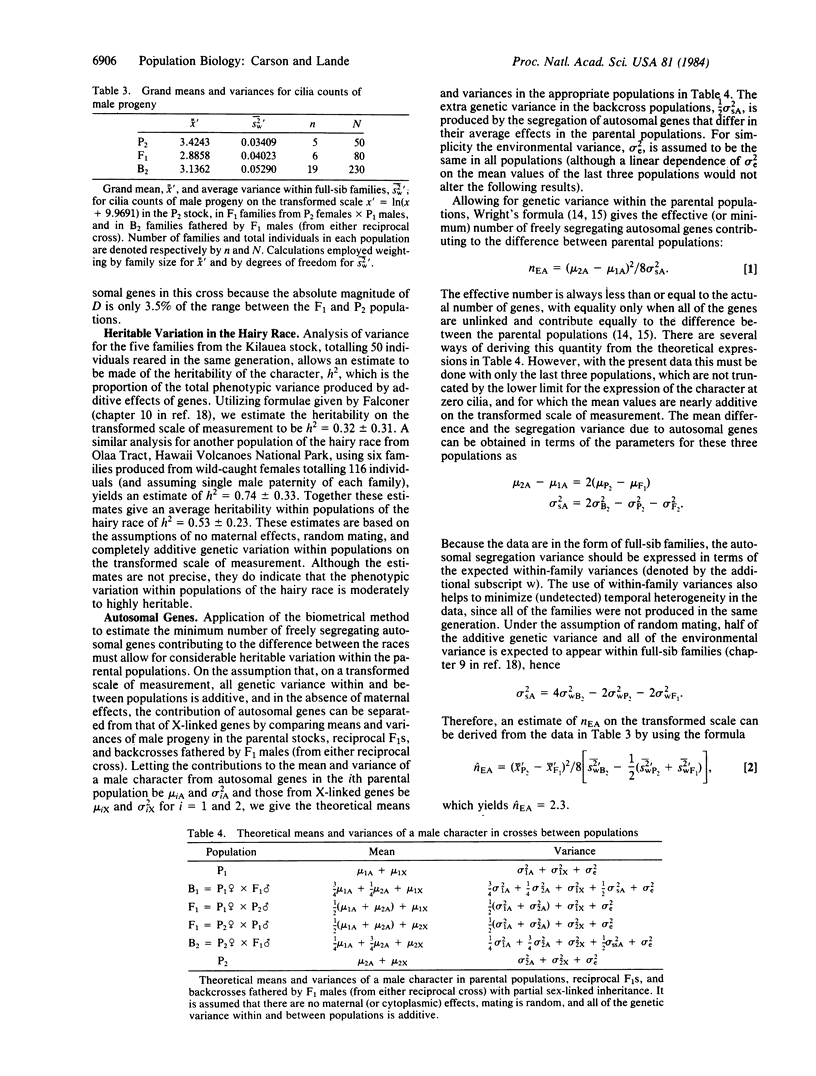Abstract
Reciprocal crosses were carried out between laboratory stock specimens obtained from two races of Drosophila silvestris from the island of Hawaii that differ in a quantitative secondary sexual character. The race from the Hilo side of the island has a novel attribute, consisting of an extra row of cilia on the tibia of males, which is used during courtship. With regard to this character, sex-linked genes contribute about 30% of the difference, and the remaining 70% of the difference between the races is produced by genes on at least two autosomes. The novel character appears to have been the outcome of altered sexual selection in the Hilo-side race. In an altered genetic environment, resulting from a founder event or random genetic drift, sexual selection may take a new direction. Such a shift may serve as a model for incipient speciation.
Full text
PDF



Selected References
These references are in PubMed. This may not be the complete list of references from this article.
- Carson H. L. Evolution of Drosophila on the newer Hawaiian volcanoes. Heredity (Edinb) 1982 Feb;48(Pt 1):3–25. doi: 10.1038/hdy.1982.2. [DOI] [PubMed] [Google Scholar]
- Lande R. Models of speciation by sexual selection on polygenic traits. Proc Natl Acad Sci U S A. 1981 Jun;78(6):3721–3725. doi: 10.1073/pnas.78.6.3721. [DOI] [PMC free article] [PubMed] [Google Scholar]
- Lande R. The minimum number of genes contributing to quantitative variation between and within populations. Genetics. 1981 Nov-Dec;99(3-4):541–553. doi: 10.1093/genetics/99.3-4.541. [DOI] [PMC free article] [PubMed] [Google Scholar]
- Spiess E. B., Carson H. L. Sexual selection in Drosophila silvestris of Hawaii. Proc Natl Acad Sci U S A. 1981 May;78(5):3088–3092. doi: 10.1073/pnas.78.5.3088. [DOI] [PMC free article] [PubMed] [Google Scholar]


